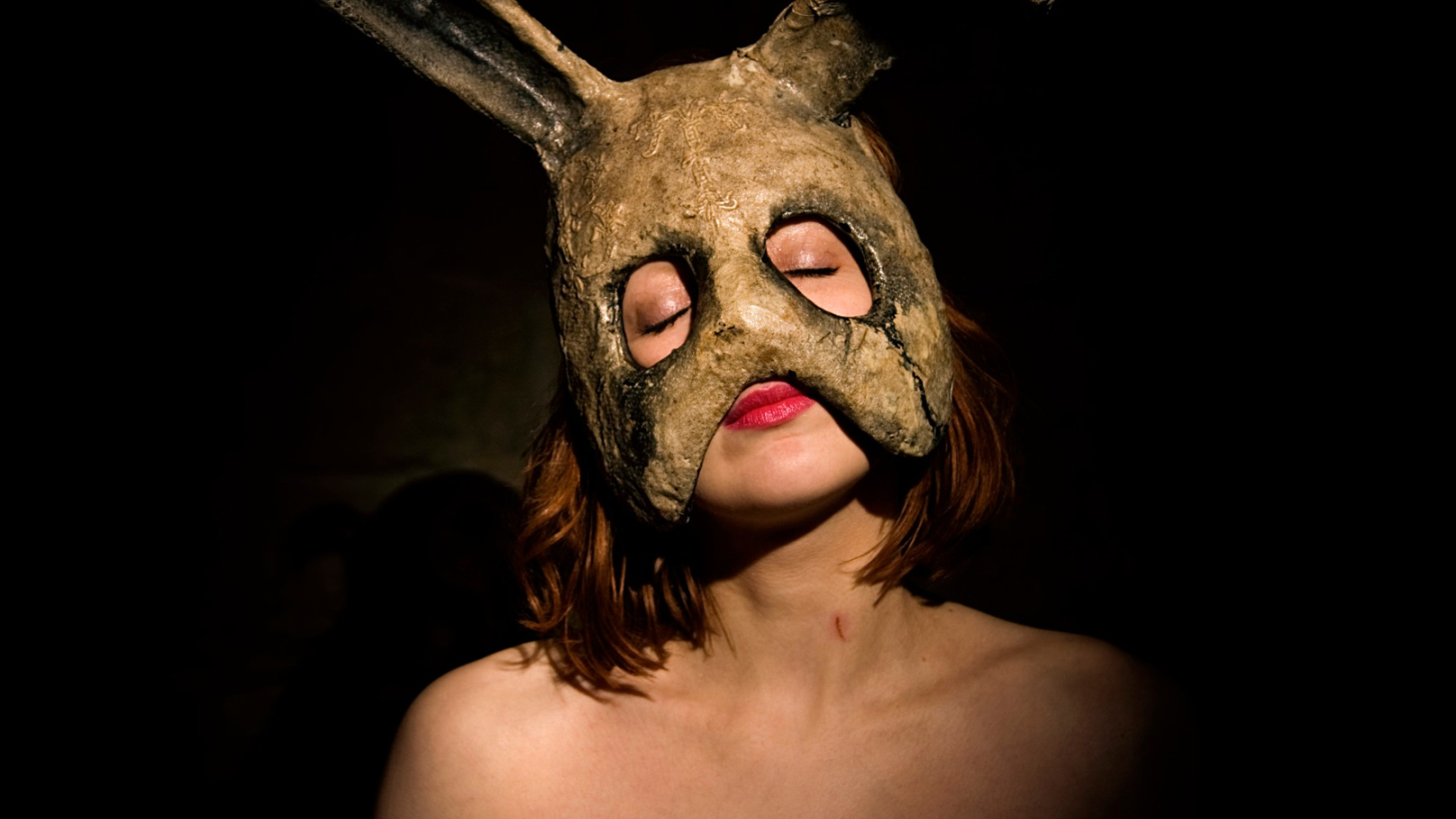The Advocate For Fagdom

Visitors to the Berlinale are well acquainted with the work of Canadian underground director Bruce LaBruce. Co-directed with Rick Castro, his feature film debut, HUSTLER WHITE, which told the story of a rent boy working on Santa Monica Boulevard, screened at the Berlinale in 1996. Bruce LaBruce also showed his gay zombie horror film OTTO, OR, UP WITH DEAD PEOPLE – at the festival in 2008. Bruce LaBruce freely admits that “most of my films are sexually explicit”. His work mixes gay porn with the artistic mores of independent cinema.
Bruce LaBruce, whose real name is Justin Stewart, was born in Southampton, Ontario, in 1964. He attended film school in Toronto and studied film theory at New York University. He has worked for gay punk fanzines and produced Super 8mm films. “Aficionados think of him as a transgressive artist in the truest sense of the word” says French festival director Frédéric Thibaut, “those who are more behind the times see him, at best, as the spiritual son of Kenneth Anger and John Waters. Pragmatists cherish him as a leading light of the queercore movement.”
In her portrait of this controversial filmmaker Angélique Bosio combines rare archive material with statements from his collaborators and famous colleagues including John Waters, Gus Van Sant, Harmony Korine and Richard Kern. The film also includes an interview with Berlin producer Jürgen Brüning, for LaBruce’s most recent films (including the 2004 work THE RASPBERRY REICH), were all made in Berlin. Bruce LaBruce: “It’s great filming in Berlin. The city is one of the best places to film in the world; it has spectacular locations where you can either film for nothing or very cheaply.”
details
-
Runtime
92 min -
Country
France -
Year of Presentation
2011 -
Year of Production
2011 -
Director
Angélique Bosio -
Cast
Bruce LaBruce, Gus Van Sant, Bruce Benderson, Glenn Belverio, Rupert Goldsworthy, Ernest Hardy, Richard Kern, Harmony Korine, Javier Peres, Jack Sargeant, John Waters, Jey Crisfar, Susanne Sachsse, Vaginal Davis, Jürgen Brüning, Rick Castro -
Production Company
Le Chat qui Fume -
Berlinale Section
Panorama -
Berlinale Category
Documentary Film
pictures from the movie

Biography Angélique Bosio
Born in France in 1978, she began her career working in sales for the company Mondofilms and later moved into production.
Her jobs include working as a production secretary on Stephen Frears’ CHERI, which screened in Competition at the 2009 Berlinale.
In 2002 she began working on LLIK YOUR IDOLS (2007), a documentary about the Cinema of Transgression and New York’s New Wave of the eighties.
She is currently working on a documentary about fashion and lingerie designer Fifi Chachnil. She lives in Paris.
Filmography Angélique Bosio
2007 Llik Your Idols | 2013 Pretty en Rose
Biography Bruce LaBruce
Born 1964 in Southampton, Canada. He attended film school in Toronto and studied film theory at York University. His film Hustler White was screened in 1996 in the Panorama and became his first international success. He has been a guest of the Berlinale several times, most recently in 2014 at Forum Expanded with Pierrot Lunaire, for which he won the Teddy Award. He has also directed numerous music videos and plays, writes and photographs for international magazines, newspapers and websites. As an artist, he has been represented in numerous international exhibitions.
Biography Gus Van Sant
Gus Van Sant was born in Louisville, Kentucky, USA, the son of a travelling salesman. During his early years his family moved constantly, but Van Sant took refuge in artistic pursuits—particularly painting and making semi-autobiographical super-8 films.
He entered the art school at the Rhode Island School of Design in 1970, and it was here that Van Sant came to experience the alternative cinema of such avant-garde directors as Andy Warhol, which became a catalyst for his own studies in filmmaking.
After an unsuccessful period in Hollywood in the late 1970s and early 1980s, Van Sant moved to New York City, honing his skills directing commercials. During his New York period, he saved the money required to produce his first feature film, Mala Noche (1985). A success on the festival circuit, it established a number of recurring themes in Van Sant’s work and brought his name to the attention of Universal. The studio eventually turned down the ideas the openly gay Van Sant pitched, perhaps due to the controversial nature of his preferred subjects.
Returning to independent production, Van Sant made the films Universal had declined—Drugstore Cowboy (1989) and My Own Private Idaho (1991), which showcased his affinity for society’s fringe-dwellers, such as drug-dealers and gay hustlers, and featured established young actors, Matt Dillon, River Phoenix and Keanu Reeves, whose reputations no doubt helped to raise Van Sant’s profile.
His subsequent film, however, Even Cowgirls Get the Blues (1994), was a commercial and critical disappointment, and saw Van Sant return to Hollywood production for his next film, the much-lauded black comedy To Die For (1995), which earned Nicole Kidman a Golden Globe award for Best Actress in a Comedy/Musical.
Having made his reputation with small arthouse films, Van Sant was finally accepted into mainstream Hollywood with 1997’s Good Will Hunting, which earned nine Oscar nominations, winning two.
His next film project was a 1998 homage to Alfred Hitchcock’s Psycho; indeed, it was a shot-by-shot remake of the original, albeit in colour.
More recently, Van Sant has directed a trio of films about death: Gerry (2002); Elephant (2003), which won both the Best Director and Palme d’Or at Cannes that year; and Last Days (2005), which was also awarded at Cannes.
-madman.com